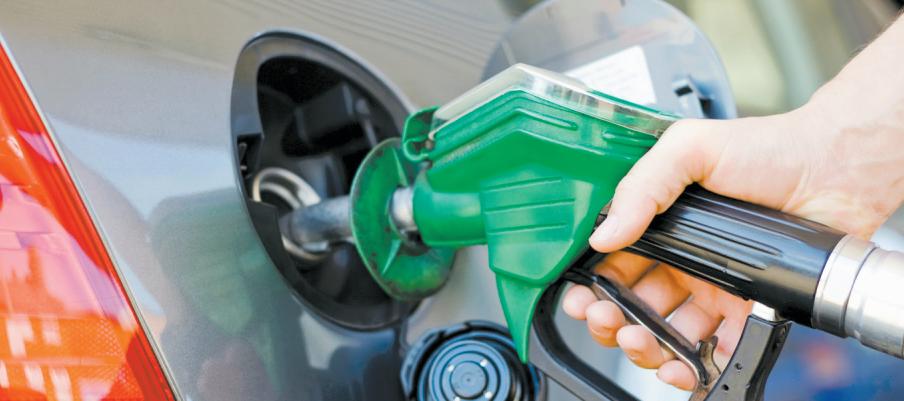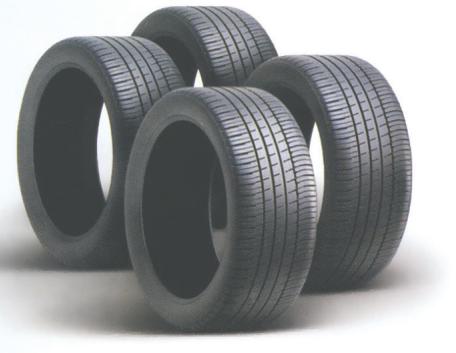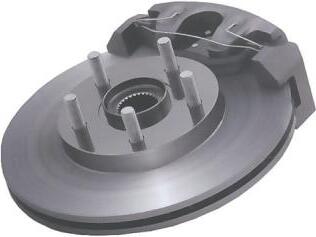
5 minute read
How to staysafe on wintryroads
Many people will remember the winter of 2013-14 for allthe wrong reasons. Record low temperatures andheavy snowfall were the story that year.Withwinternow on the horizon once again, manymotorists are looking for ways to ensure their daily commutes or holiday tripstovisit family and friends are as safe as possible.

When wintry conditions, including snowfall, compromise driving conditions, it’s best for motorists to stay home. But avoiding roadways altogetherisnot always an option,somotorists who simply must venture out onto the roadways this winter can employ the following strategies to ensure they safely arrive at their destinations. Consider winter tires. Many drivers are unsure if they need winter tires.All-season tires may suffice for those drivers who live in regions where heavy snowfall is uncommon. But winter tires are designed to perform when the temperatures are especiallycoldand in driving conditions featuring ice, slush and snow. Drivers in the Northland should considerinstalling winter tires just to be on the safe side.Some drivers mistakenly believe that vehicle features such as anti-lock braking systems and traction control make their tires more capable of handling wintry roads. But such features do not provide more traction. ABS and traction control only prevent drivers from overbraking or overpowering thetraction of theirtires. Only better tires will improve traction.
Drive slowly. Many drivers mistakenly believe they only need to drive slowwhensnowisfalling. But winter weather can make roadways unsafe even in areas that have not witnesseda single snowflake fall from the sky. Wet winter roadscan quickly turn into icy winter roads, and no ABS system or traction control device can prevent a car that’s travelingtoo fast from skidding out. Poor visibility is another reason to drive slowly in winter. Peripheral vision is oftencompromised when driving in winter, as dirt, salt or sand builduponwindshields and side windows and mirrors can make it hard for motorists to fully view their surroundings. Even if your visionis notcompromised, afellow motorist’s mightbe. So ease up on the gas pedal in winter so you have more time to react to potentially adverse conditions.
Don’t drive tooclosely to other motorists. In addition to driving slowly,motorists also should leave extra room between their vehicles and the vehicles in front of them. In such conditions, for every 10 miles per hour drive aminimum of four car lengths behind the motorist in front of you. So if you are driving 50 miles perhour, besure to leave 20 car lengths between you and the car ahead of you. This gives youample time to react and builds in some extra response timeshould your visibility be compromised.
Maintain your vehicle. Avehicle shouldbe maintained regardless of the season, butit’s especially important that your vehicle perform at its peak in winter. Avehicle’s battery and windshield wipers are awinter driver’s best friend, but only if they are operatingatoptimal capacity. Being stranded on aroadside in winter is more dangerous than in anyother time of year. That’s because driver visibility is more compromised in winter, and it can be hard for motorists to see or avoid vehiclesonthe side of the road.Maintain proper fluid levels and make sure yourbattery is charged and the gas tankis full before making any winter trips. Wintry conditions often make driving especially hazardous. But drivers who adopt certain habits when driving in winter can greatly reduce their risk of accidents.
Many motorists notice that their vehicles seem to get less miles per gallon in cold weather than in warm weather. That’s not atrick of the brain, as studies have shown that cars do, in fact, have poorer fuel in economy in cold weather.
According to the United States Department of Energy, fuel economy tests have indicated that, when taking short trips in acity, aconventional gasoline car’s gas mileage is about 12 percent lower at 20 Fthanitwould be at 77 F. The disparity is even greater in hybrid vehicles, which can see their fuel economy decline by roughly 34 percent when driven at 20 F. Before drivers can understand how to improve their winter fuel economy, it’s beneficial to learn why cold weather has such an adverse effect on acar’s fuel economy.
Ahostoffactors combine to reduce fuel economy in the winter. When temperatures dip, engine oil and other drive-line fluids also get colder, and this increases engine and transmission friction. That forces the vehicle to work harder and use more fuel. An engine also takes longer to reach its most fuelefficient temperature when the weather outside is cold. This won’t have too great an impact on fuel efficiency when taking long trips, but the shorter the trip the less economical the vehicle’s use of fuel will be, as ashorter trip means the vehicle is spending alarger percentage of the overall drive at alessfuelefficient temperature.
Another reason fuel economy suffers in the winter is the necessities and certain creature comforts drivers need when driving in the cold weather. Windshield defrosters and vehicle heating systems use asubstantial amount of power, and that usage forces the vehicle to expend more energy and use more fuel. And while many drivers consider heated seats one of the greatest automotive inventions known to man, those seats also use up alot of power that negatively impacts fuel economy. But factors outside the vehicle also impact its fuel economy in the winter. For example, colder temperatures decrease tire pressure, and that increases roll resistance, which means the car must work harder and use more fuel to getdownthe street than it would if it were riding on fully inflated tires in the summertime. Cold air also is more dense than warm air, and that increases aerodynamic drag on the vehicle, which then needs to use more fuel to counter the increased drag.
So what can be done to improve fuel economy in the winter? Fortunately, drivers can take several steps to do just that.




Park the vehicle in agarage. Leaving your car in the driveway in the winter means you might have to dig the vehicle out come winter snowstorms. But that’s not the only inconvenience of parking your vehicle outside in the winter, as doing so can adversely affect its fuel economy. When possible, park the car in the garage, as this increases the initial temperature of the engine, engine oil, drive-line fluids, and the vehicle’s cabin. This can shorten the time it takes for the engine to reach its most fuelefficient temperature while decreasing the engine and transmission friction that negatively impacts fuel efficiency. Disregard conventional wisdom. Conventional wisdom has long suggested that idling avehicle for several minutes will warm up the engine more quickly than simply driving. But many vehicle manufacturers now recommend that drivers idle their vehicles for no more than 30 seconds, noting that idling the car unnecessarily wastes fuel and that driving the vehicle is the fastest way to warm up its engine. If you must warm up the vehicle, stick to the now widely accepted guideline that recommends idling for no more than half aminute. Another nugget of conventional wisdom motorists may want to ignore concerns the motor oil they use in the winter. Many vehicle manufacturers now recommend aspecific type of oil to use when driving in cold weather, so follow that advice instead of adhering to past practices that may not have been as fuel efficient. Monitor tire pressure. As noted, colder temperatures decrease tire pressure, so drivers should monitor their tire pressure regularly throughout winter to keep their vehicle safe and to ensure they are not wasting fuel. Remove the roof rack. Summer adventurists who love tying their mountain bike or kayak to their vehicles’ roof rack before heading off to explore parts unknown should remove those roof racks when the temperatures dip. Roof racks increase wind resistance and decrease fuel economy, so remove them during the offseasons.




Fuel economy will almost certainly decrease when the mercury drops. But drivers can employ anumber of strategies to make their vehicles more fuel efficient in cold weather.








